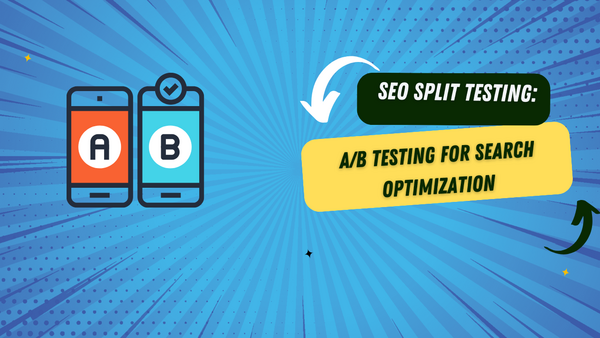Notifications
ALL BUSINESS
COMIDA
DIRECTORIES
ENTERTAINMENT
FINER THINGS
HEALTH
MARKETPLACE
MEMBER's ONLY
MONEY MATTER$
MOTIVATIONAL
NEWS & WEATHER
TECHNOLOGIA
TV NETWORKS
VIDEOS
VOTE USA 2026/2028
INVESTOR RELATIONS
COMING 2026 / 2027
ALL BUSINESS
COMIDA
DIRECTORIES
ENTERTAINMENT
FINER THINGS
HEALTH
MARKETPLACE
MEMBER's ONLY
MONEY MATTER$
MOTIVATIONAL
NEWS & WEATHER
TECHNOLOGIA
TV NETWORKS
VIDEOS
VOTE USA 2026/2028
INVESTOR RELATIONS
COMING 2026 / 2027
About Me
 lucass jack
lucass jack I am a passionate tech enthusiast and a seasoned writer with a Master's degree in Computer Science from St. Patrick Science College. With a career rooted in a leading tech institute, I combine my in-depth technical expertise with a flair for writing to simplify complex technology topics for my readers. I love discovering new, innovative trends in the tech world, including sharing insights on programming, software innovations, and other digital advancements. Most of my time is actually spent learning, experimenting, and inspiring others through the quality of my contributions in the technology community.
 lucass jack -
Apr 25 -
Technology -
#SEO
#Digital marketing
#LocalSEO
-
277 views -
0 Comments -
0 Likes -
0 Reviews
lucass jack -
Apr 25 -
Technology -
#SEO
#Digital marketing
#LocalSEO
-
277 views -
0 Comments -
0 Likes -
0 Reviews

In the fast-paced world of digital marketing, SEO isn’t a “set-it-and-forget-it” task. Algorithms evolve, user behavior shifts, and your competitors are always one step away from out-ranking you. That’s why SEO is a continuous process of optimization and refinement.
Enter SEO split testing (also known as A/B testing for SEO). It’s one of the most effective ways to scientifically validate whether your SEO tweaks are genuinely moving the needle—or if they’re just noise.
In today’s data-driven landscape, making decisions based on gut feelings can be risky. SEO split testing allows marketers to test hypotheses, gather real data, and confidently make changes that drive meaningful results.
SEO split testing is a controlled experiment where you compare two versions of a web page to see which one performs better in search results. Unlike traditional A/B testing, which focuses on user behavior (clicks, conversions), SEO split testing focuses on search metrics like rankings, impressions, and CTR.
Key elements you can test:
Title tags
Meta descriptions
Internal links
Structured data/schema
Content structure
Benefits:
Improved organic rankings
Higher click-through rates (CTR)
Increased conversions and traffic

Google’s ranking algorithms are constantly evolving—what worked yesterday might not work today. That’s why testing is essential.
Why it matters:
Minimize guesswork: Validate strategies before implementing them site-wide.
Optimize user experience: Testing helps you create content and layouts that both users and search engines love.
Future-proof your site: Adapt to algorithm updates and keep your traffic stable.
Setting up an SEO split test isn’t rocket science, but it does require a systematic approach.
Choose the right tool: Google Optimize, SearchPilot, or custom scripts.
Set clear goals: Are you testing for CTR, bounce rate, or rankings?
Segment pages: Divide your URLs into control and variation groups.
Run the test: Let it run long enough to gather statistically significant data (usually 2-4 weeks).
Analyze: Use Google Search Console and Analytics to measure results.
When it comes to SEO split testing, some elements pack more punch than others:
Title Tags: Small tweaks here can boost CTR instantly.
Meta Descriptions: Craft compelling snippets that drive clicks.
Content Length & Structure: Test short vs long-form content.
Internal Links: Improve crawlability and distribute link equity.
Rich Snippets & Schema: Add structured data to enhance visibility.
The magic lies in the data. Here’s what to look for:
CTR: Did your new title tag increase clicks?
Average Position: Are you ranking higher after adding schema?
Impressions: Did search visibility improve?
Conversions: Did organic traffic bring more sign-ups or sales?
Tools like Google Search Console, Ahrefs, and SEMrush can help visualize the changes.
While SEO split testing is powerful, there are pitfalls:
No hypothesis: Always start with a reason for testing.
Too many changes: Isolate variables to pinpoint what’s working.
Low traffic pages: Test on pages with enough traffic to ensure accuracy.
Ignoring statistical confidence: Don’t draw conclusions too soon!
A SaaS company tested adding their USP (Free Trial) to the title tag and saw a 23% increase in CTR within 3 weeks.
An e-commerce site added product schema to their pages, resulting in a 15% boost in organic traffic thanks to rich snippets.
A content site improved internal linking, which increased average rankings by 2-3 positions across tested pages.
When you’re running tests, you often need to make quick content tweaks—sometimes in unexpected formats.
For instance, if your content team needs to update documents or PDFs during a test, using a tool to edit PDF text online can save you a ton of time. No need to reformat or convert; just hop in, make changes, and keep the test running smoothly.
Explore DeepSeek Türkçe ile İçerik Üretimi: Blog ve Sosyal Medya Stratejilerinizi Nasıl Güçlendirir?
SEO split testing isn’t just a trendy buzzword—it’s a critical strategy to stay competitive in 2025 and beyond.
Takeaways:
Always keep testing. SEO is a marathon, not a sprint.
Stay updated with algorithm changes and industry trends.
Don’t fear failure—tests that don’t “win” still provide valuable insights.
Happy testing!
